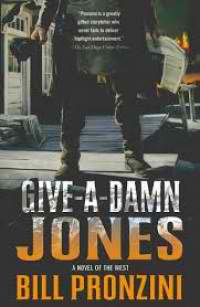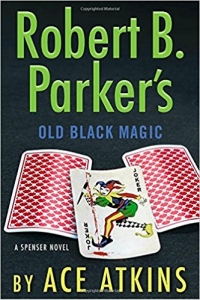They Come in All Colors by Malcolm Hansen
 Monday, May 28, 2018 at 9:00AM
Monday, May 28, 2018 at 9:00AM 
Published by Atria Books on May 29, 2018
They Come in All Colors is a story of southern racism and its less obvious northern counterpart, told from the perspective of a boy who is biracial, not white and not black and not accepted by anyone except his parents and a few friends. Most of the story is told in flashbacks to 1962 that acquaint the reader with the racist Georgia town in which Huey was born — so racist that the motel owner is forced to drain and clean the pool because a black kid swam in it. The civil rights struggle has reached the town as black activists from other states are arriving on busses to support the fight to eat at whites-only lunch counters. The flashbacks are told from Huey’s perspective as an eight-year-old — an eight-year-old who identifies as white, like his father, who believes his light-skinned mother is white, and who has no idea that he’s the reason the swimming pool has closed.
Huey’s father is a peanut farmer. He loves Huey, he loves his wife, and he isn’t as racist as most white people in his community, he is a product of his time. He has a complicated relationship with Toby Muncie, a black man who has worked for him for years. Toby, in turn, has a complicated relationship with Huey’s mother. Huey’s father has convinced himself that his wife is “a racial enigma,” that her race cannot be identified, but that neither she nor his son are “colored.” The rest of the town disagrees.
Toby is almost a part of Huey’s family and is widely respected as a knowledgeable farmer, but Toby is a passionate supporter of the Freedom Riders, a position that does not sit well with the town’s white residents. Huey is angry at blacks who protest for equal rights, but he becomes confused when school kids start calling him a mongrel and a nappy-haired love child. His true education begins when a black kid accuses him of acting white “just because he looks like a cracker.”
In the present, Huey’s mother is a nanny for a wealthy couple in New York City. Huey has been accepted at Claremont, an exclusive prep school, because he’s the kind of minority the school likes — different but not too different. His only friend is a math prodigy named Zukowski who is attending the school for the same reason. Yet Huey has no hope of fitting in. He worries about being embarrassed by his mother, who has embraced progressive values and opposes the Vietnam War, while Claremount kids understand that war is good for business and that imperialism and a ruling class are part of the world’s natural order. Eventually, Huey creates the kind of trouble that could follow him for the rest of his life.
They Come in All Colors can be understood as a coming of age story, in the sense that Huey begins to grow into an identity of his own and to see the world through adult eyes. As a child, Huey doesn’t know why his father will only take him to the lunch counter for ice cream in the only morning, before the place fills up. He hasn’t figured out racism and doesn’t know what people mean when they tell him to go back to Africa, given that he’s never left Georgia. Huey thinks a burning cross is a celebration of religion and readily accepts his parents’ assurance that the home of the town’s only black business owner burned down because of faulty wiring.
To a lesser degree, but only because she plays a lesser role, the novel is also a coming of age story for Huey’s mother. She grows into her own identity later in life than Huey does, but it’s never too late to grow. She is the most eloquent speaker in the novel, and in some ways, she represents all the people who have been cheated by America's failure to live up to its promise of equal opportunity.
The novel raises important questions about racial identity in a time when race and identity have become a prominent part of the national conversation. According to Huey’s teacher in Georgia, the world is black and white: you’re one or the other. The lesson that Huey’s mother tries to teach him is that people come in all colors, and that race is not binary. Huey’s parents don’t try to teach him that color doesn’t matter because that lesson would be contrary to everything that Huey sees and hears, and in any event, Huey’s father doesn’t believe it. To Huey’s father, appearance determines race. The fact that Huey’s mom has tan skin, or that Huey has tightly curled hair, does not make them “colored.” That’s the only view of race that allows Huey’s father to keep his self-respect after falling in love with a black woman.
While They Come in All Colors raises important issues, it frames those issues from the perspective of a kid who is loquacious, imaginative, and funny. Huey’s inability to keep his mouth shut and his enjoyment of telling a tall tale eases the pain of reading about his experiences with racism. At the same time, by the time he reaches New York, Huey is living with a burning anger that will clearly take him years to understand. The story that the novel tells is important, but the story is captivating precisely because the reader so easily attaches to Huey as he works through his conflicts and begins to learn to be himself, even if he doesn’t fit inside the boxes that are constructed by the people he meets.
RECOMMENDED



